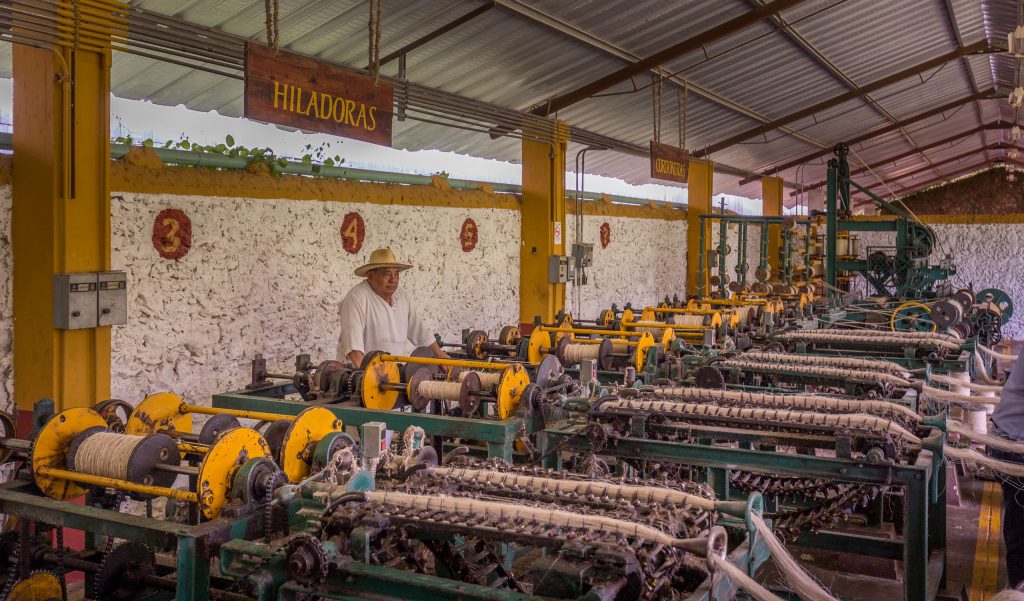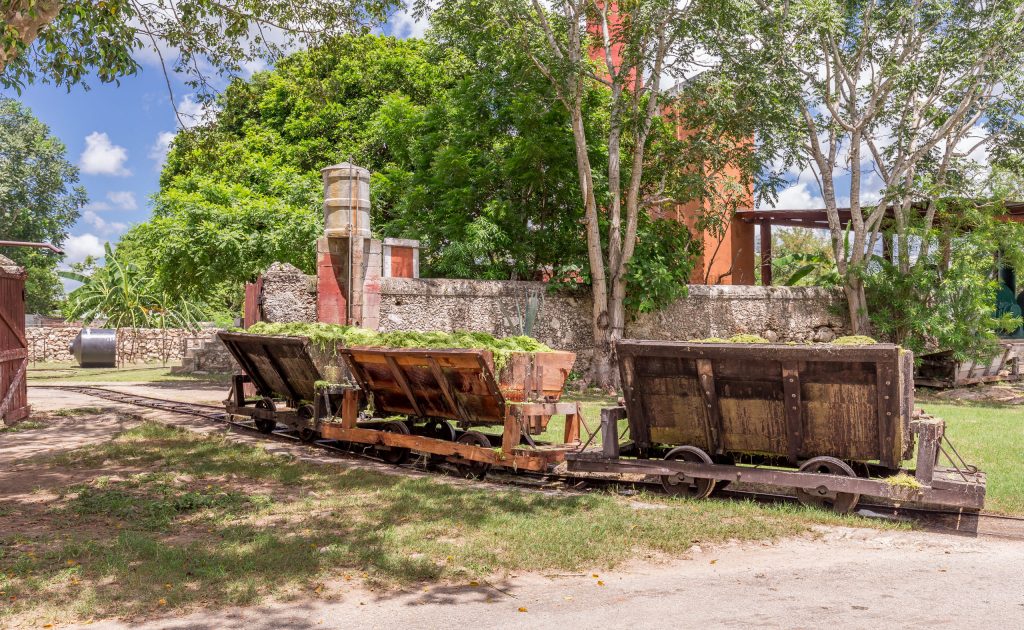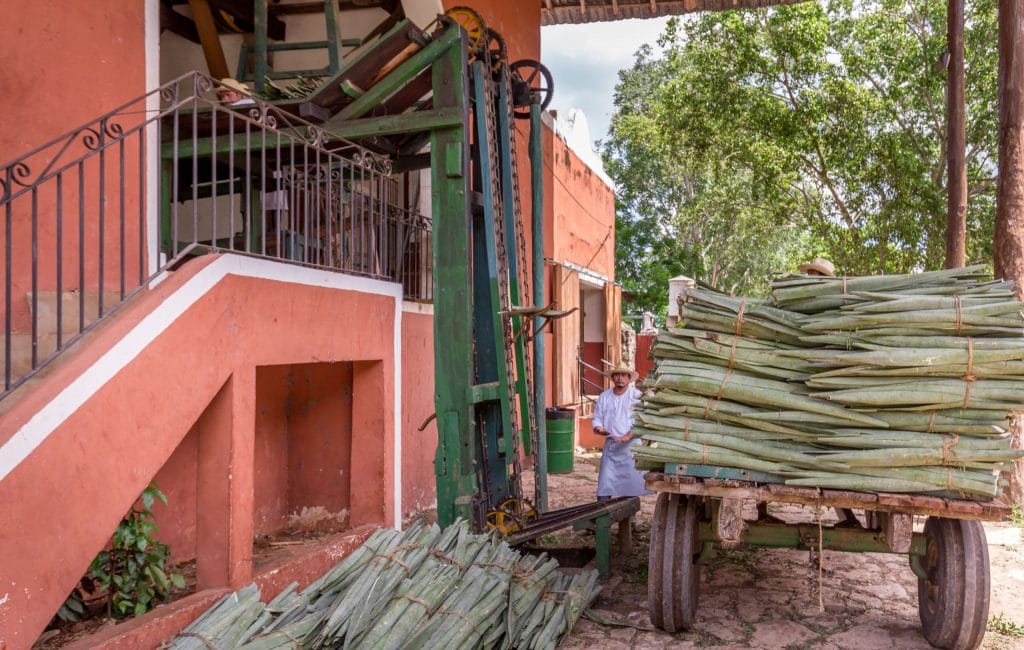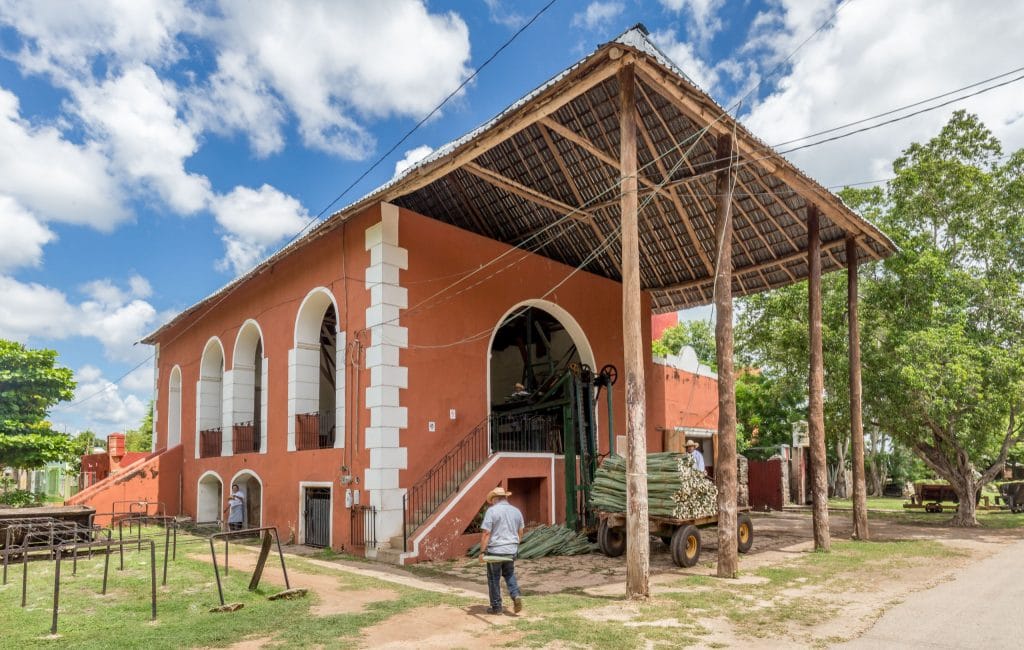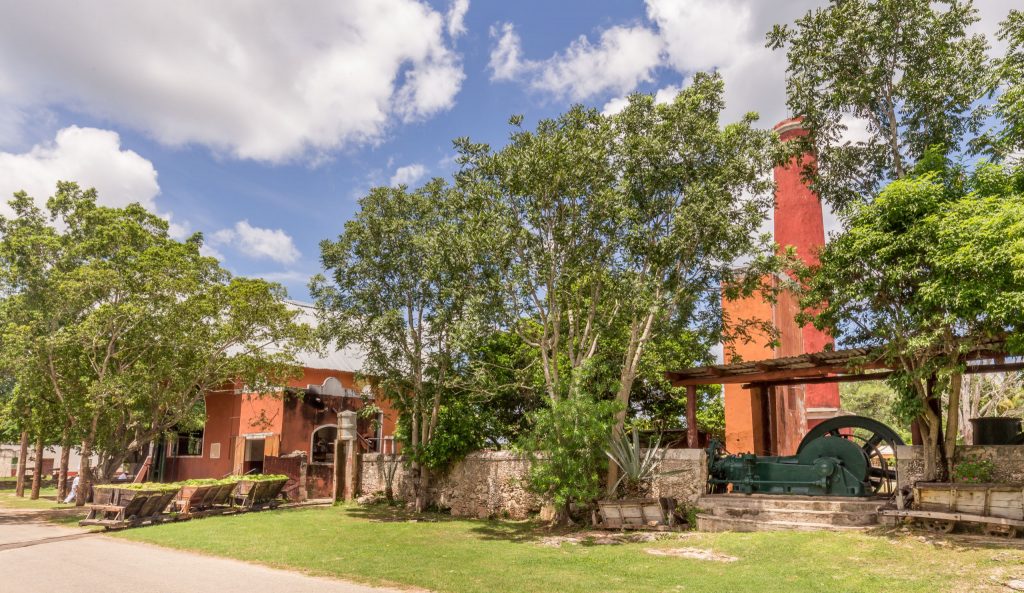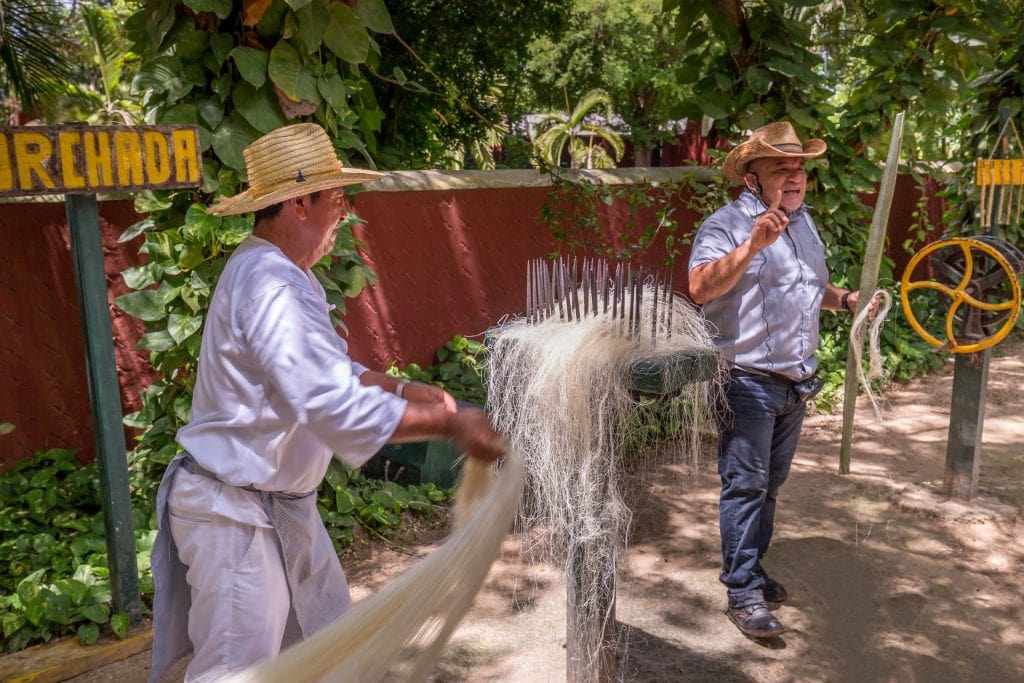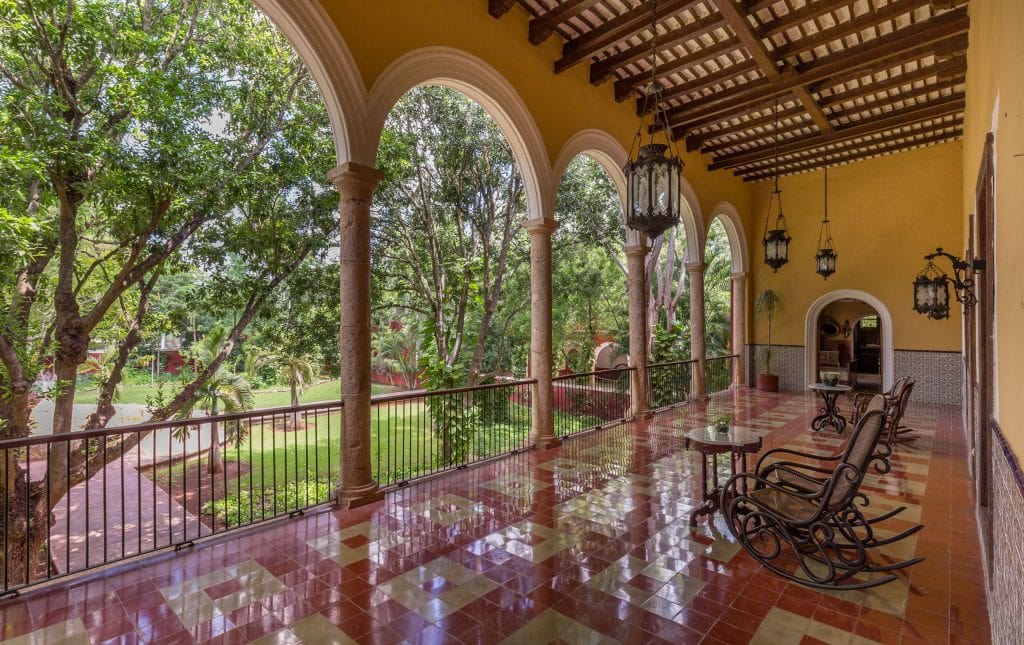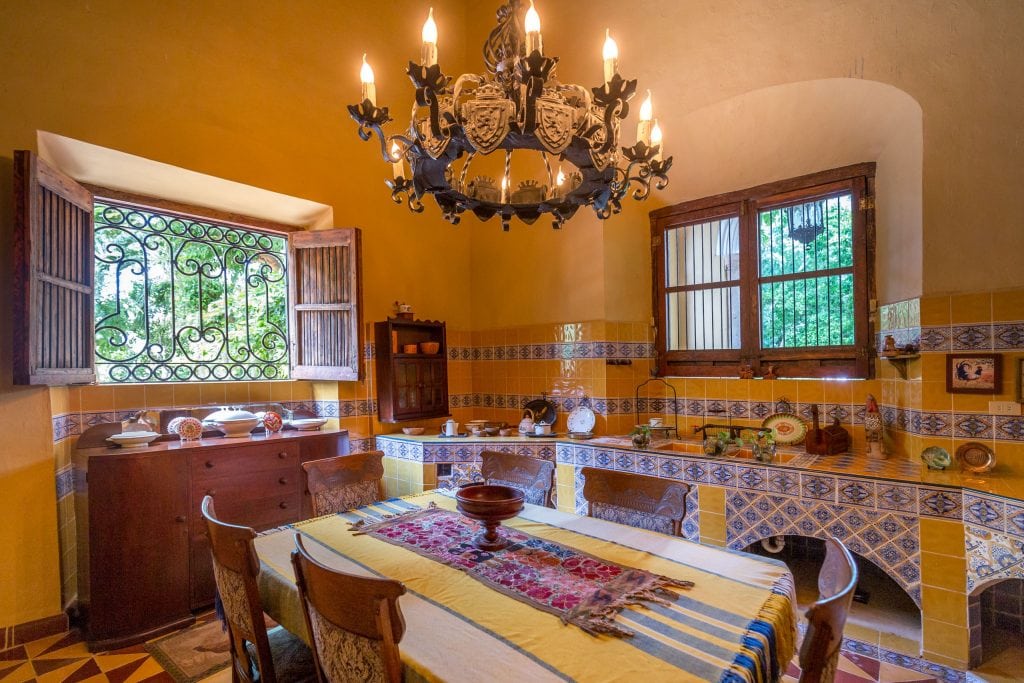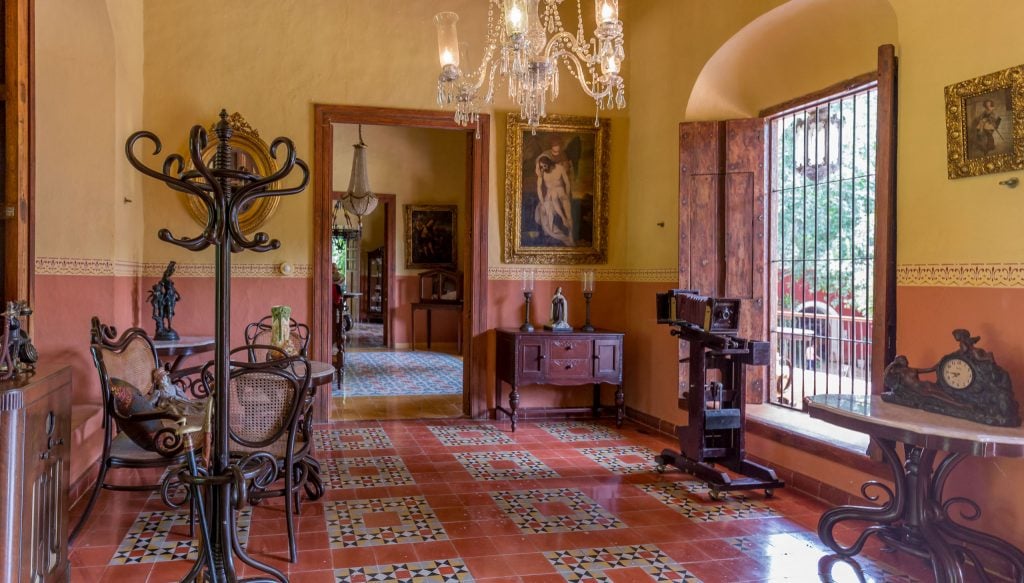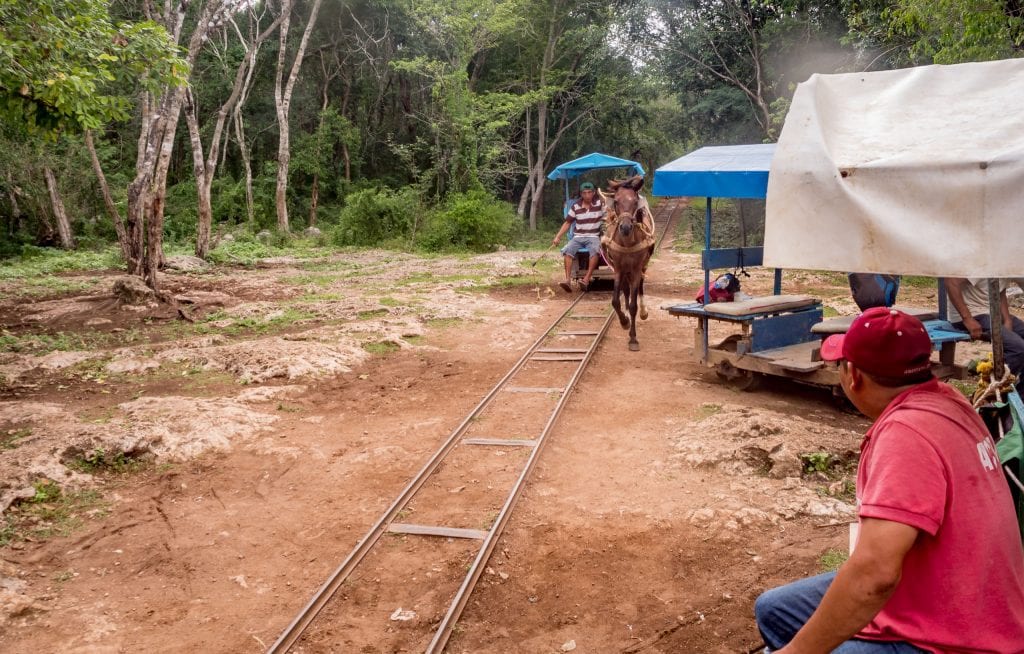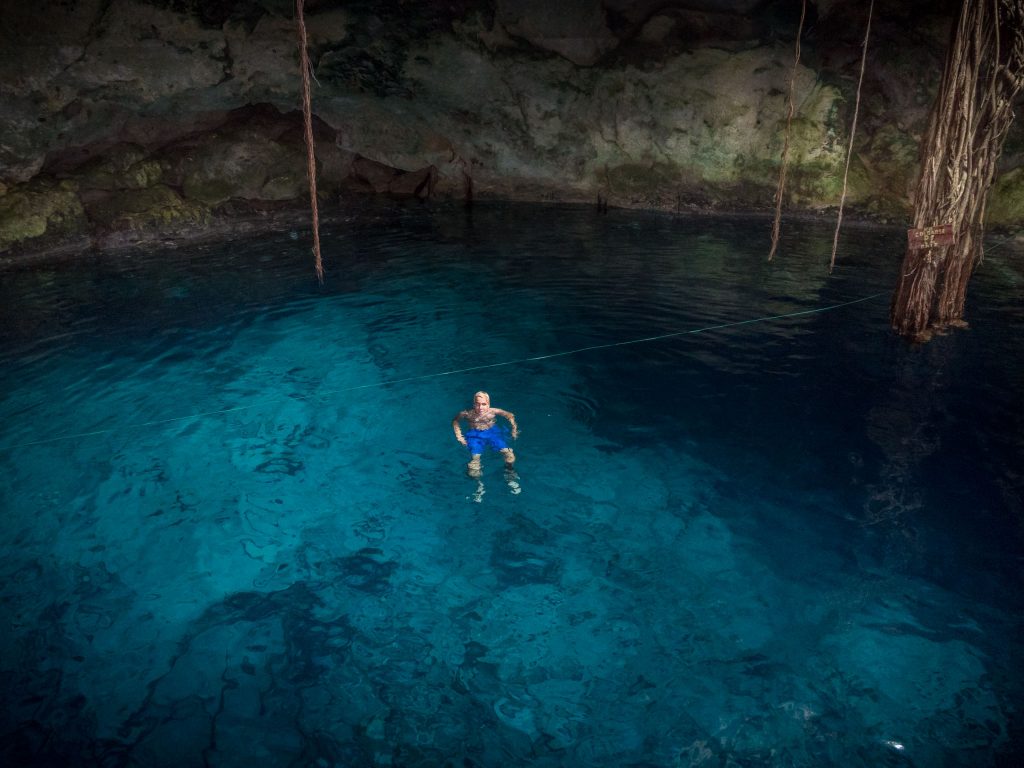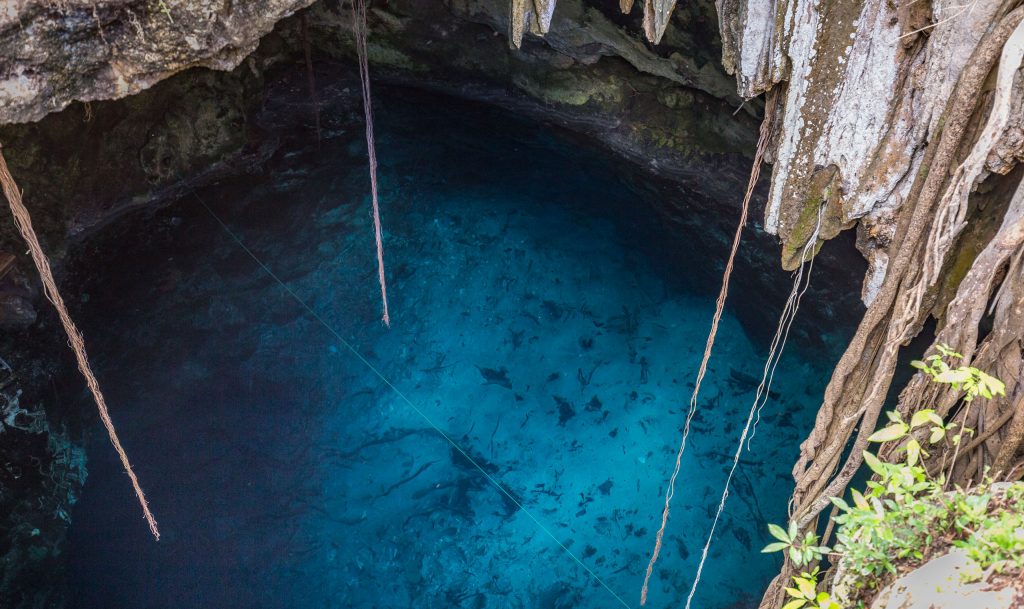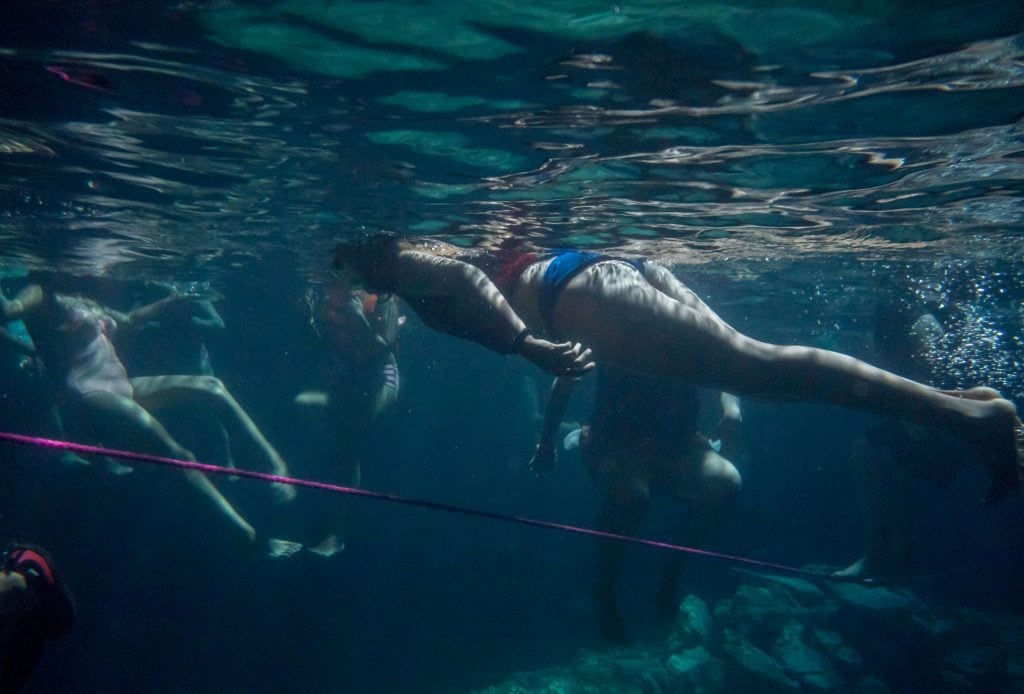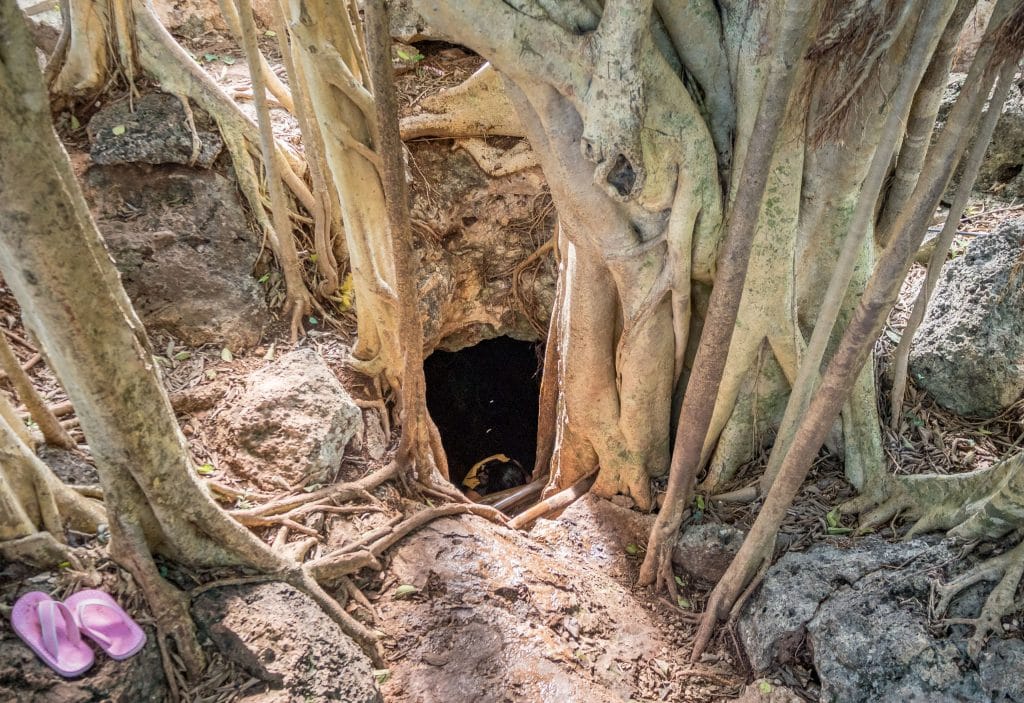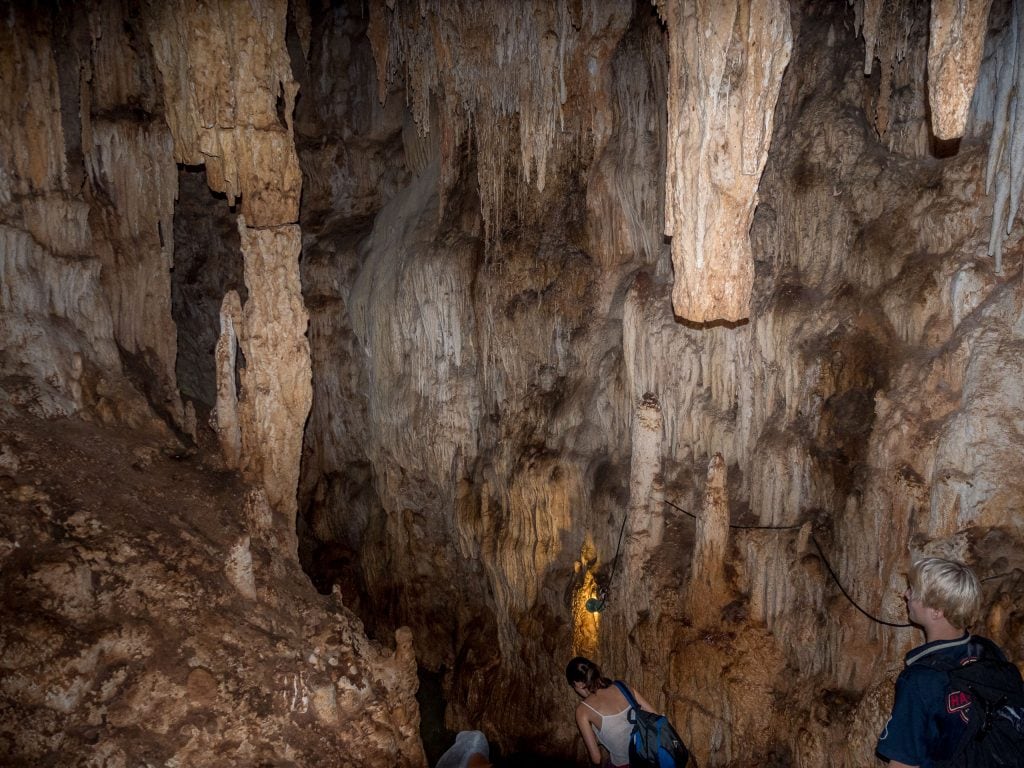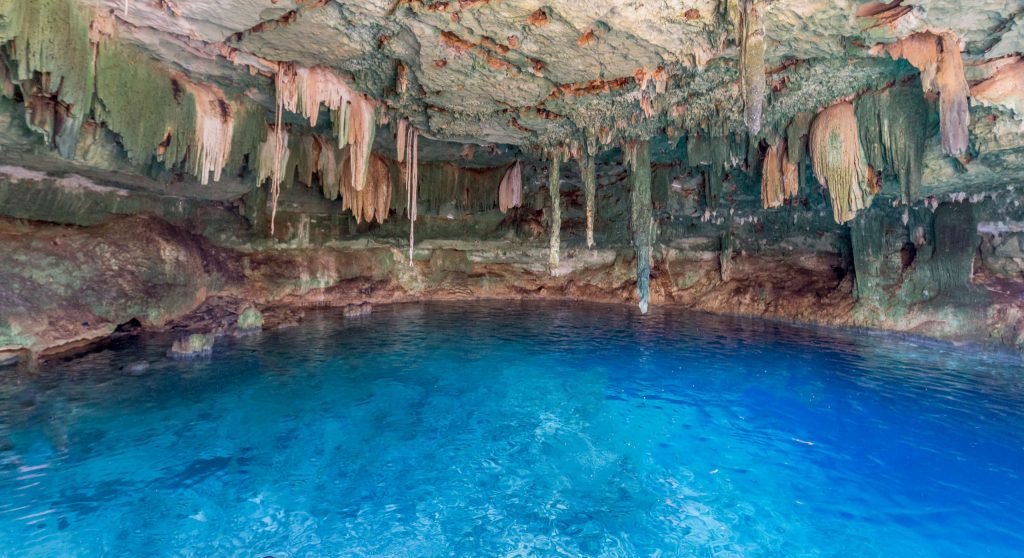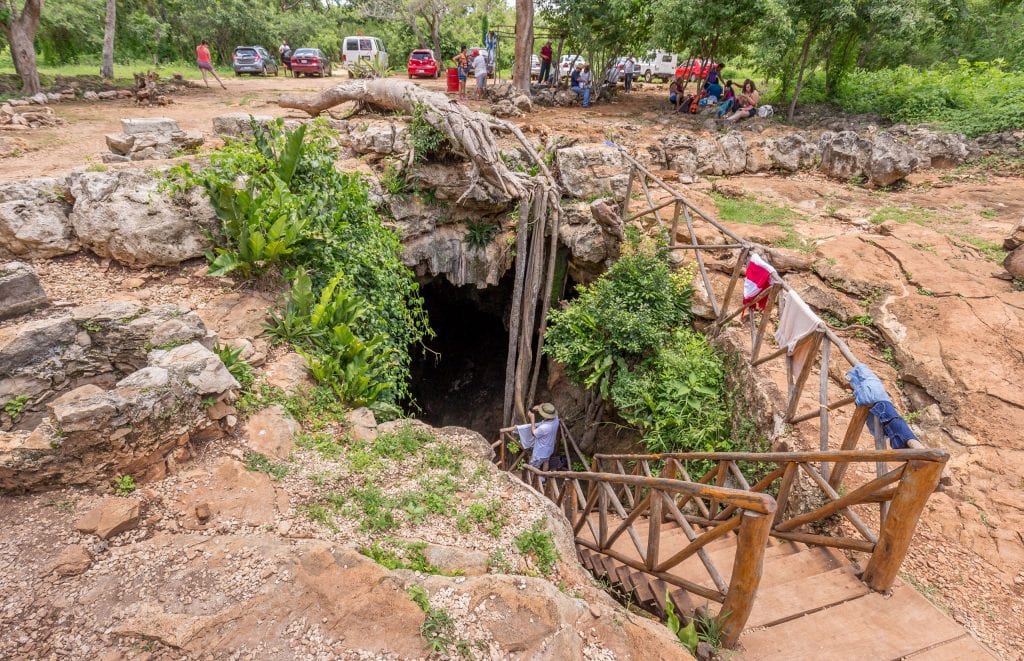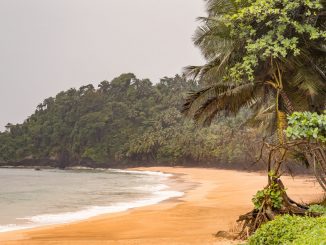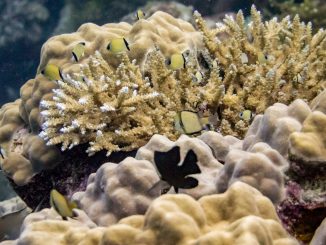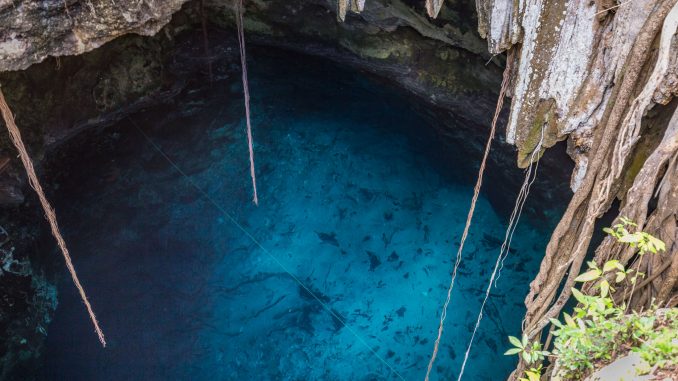
Table of Contents
The Yucatan peninsula is famous for its Mayan history and beaches but there is more. You might have heard about the cenotes, but do you know about the henequen (English: Agave) production that once thrived on the peninsula? Near Mérida are the best cenotes in Yucatan province and a restored & working henequen plantation. The combination makes a great day trip from Mérida which is exactly what I did during my amazing 10-day Yucatan road trip. You’ll learn all about the henequen plantations at the hacienda Sotuta de Peon. After soaking up that history the 3 cenotes of Cuzama are the place to cool down. This travel guide will show what to expect and how to get there.
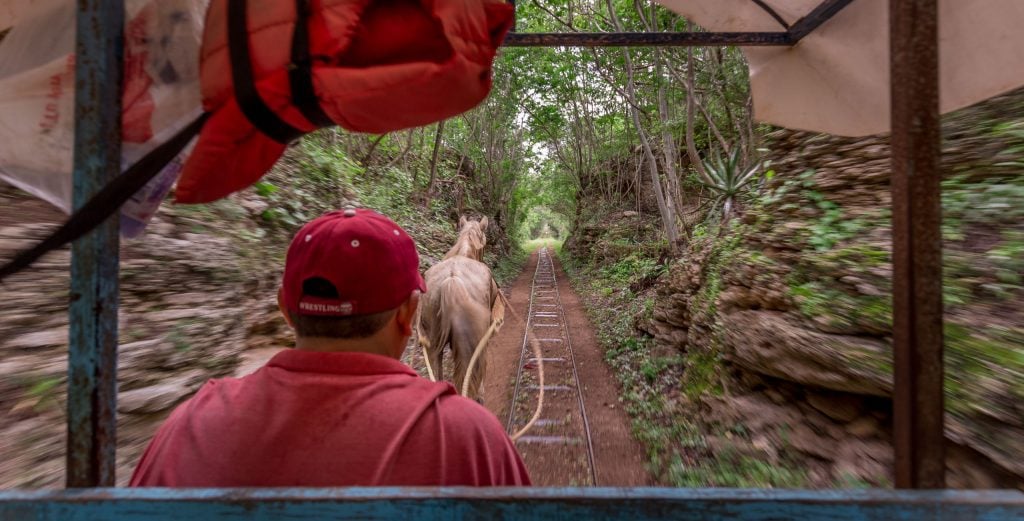
Sotuta de Peon
Sotuta de Peon is one of the many henequen plantations but the only that is fully restored, operating and has a museum. The Hacienda has places to stay overnight too which, after being there, is something I highly recommend doing. You’ll get a great feeling of colonial Spain there.
MEXICO – Exploring Yucatan: An amazing 10 day Yucatan itinerary
Plan your trip in advance and make sure to call them and fix the time of the tour as they fill up quickly. Sotuta de Peon offers pickup and drop-off service in Merida too but if you go visit the 3 cenotes of Cuzama I recommend driving yourself. I did only the museum and processing plant tour and decided not to go to the cenote they have on their grounds. I would see the best cenotes in Yucatan at Cuzama later and didn’t want to go to another one. Make sure to be there around 9AM so that you don’t run out of time. The tour takes approximate 2 hours after which you can take lunch at the property.
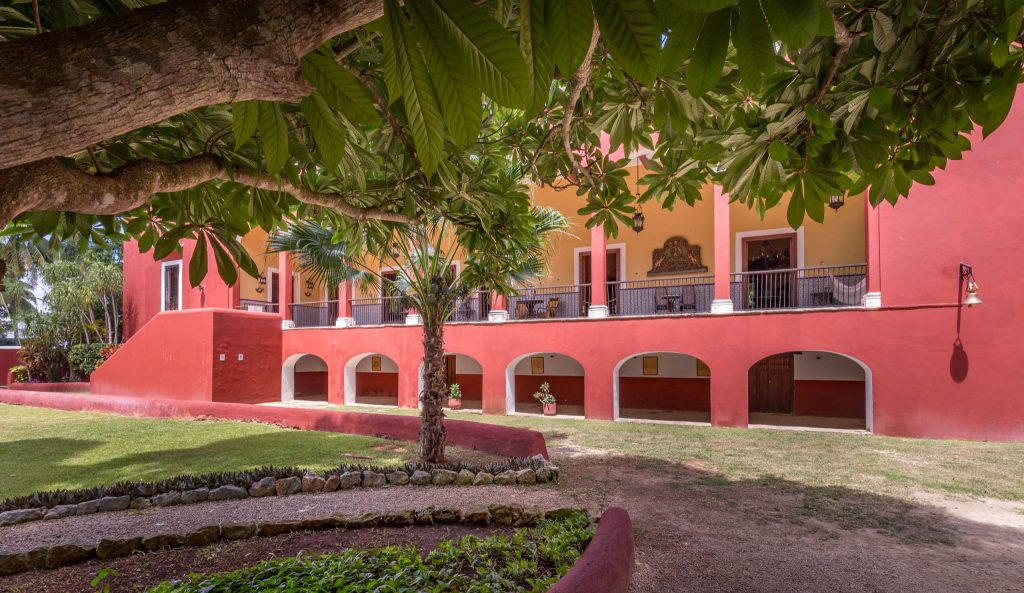
Yucatan henequen history
Henequen, or Agave in English, is a plant native to the Yucatan peninsula. The plants leaves contain fibers that can be turned into various textile products. Mayans already did that, and the Spanish made it the most important agricultural industry of the area. Especially during the American-Spanish war at the end of the 19th century the price skyrocketed. But, later during the first half of the 20th century production declined. The invention of synthetic fibers being the main reason. Once, 80% of Yucatans agricultural ground was covered with Agave plants. Today, plantations still exist and one operating the same was as a century ago is Sotuta de Peon.
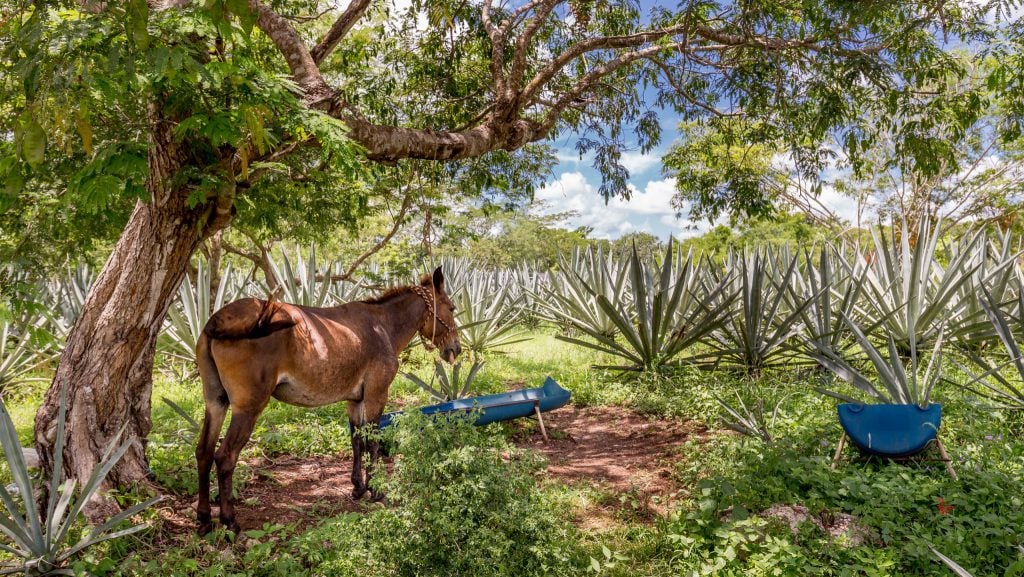
Henequen tour at Sotuta de Peon
The tour at Sotuta de Peon includes every aspect of planting, harvesting, and processing. The tour starts at the Mayan house which is turned into a museum. It’s decorated as the house of a Spanish colonial landowner over a century ago. You’ll see the kitchen, living quarters, bedroom, and guestrooms. The current owners did a real good job as all the rooms are pretty much complete with furniture and other artifacts. I enjoyed visiting the museum.
MEXICO – Exploring Yucatan: An amazing 10 day Yucatan itinerary
Next up is an explanation on how the henequen plants are planted and grown. Just before the rainy season cuts of henequen are planted in a small hole in the ground. It takes up to 5-7 years before they are ready for harvest. Especially the first 3 years one needs to keep the ground clear so that the plants can grow uninterrupted. Once big enough they keep growing on their own. After 5-7 years each plant will produce about 8-15 leaves of 1-1.5 meters a year. They are cut at the bottom and collected for further processing. Plants produce leaves for 12-20 years when new plants must replace them.
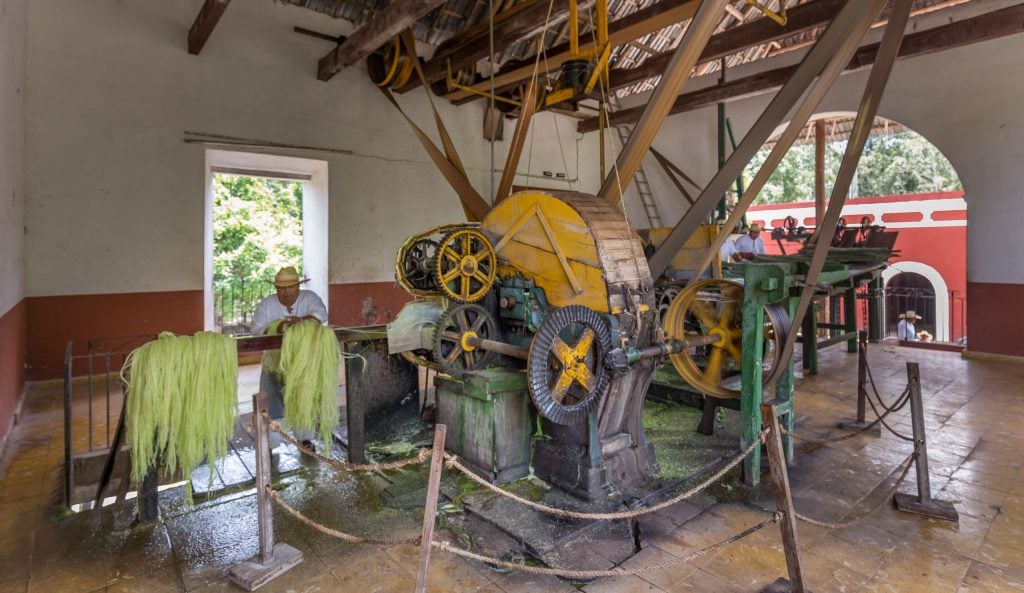
Henequen processing
Manuel processing was the only way before the invention of the steam engine. At Sotuta de Peon you can experience both manual and semi-automatic processing. The leaves are torn into shreds either manually on nails or by a processing plant. These shreds are then dried in the sun and remaining pulp is used as fertilizer. It can also be used to produce a kind of tequila. After the shreds are dry they are compressed into bales to be stored until further processing.
The fibers can be turned into a variety of products, but rope was the most common one. Fibers are strangled into larger fibers, which then are strangled into thin ropes. This process is repeated several times until the desired thickness of rope is acquired.
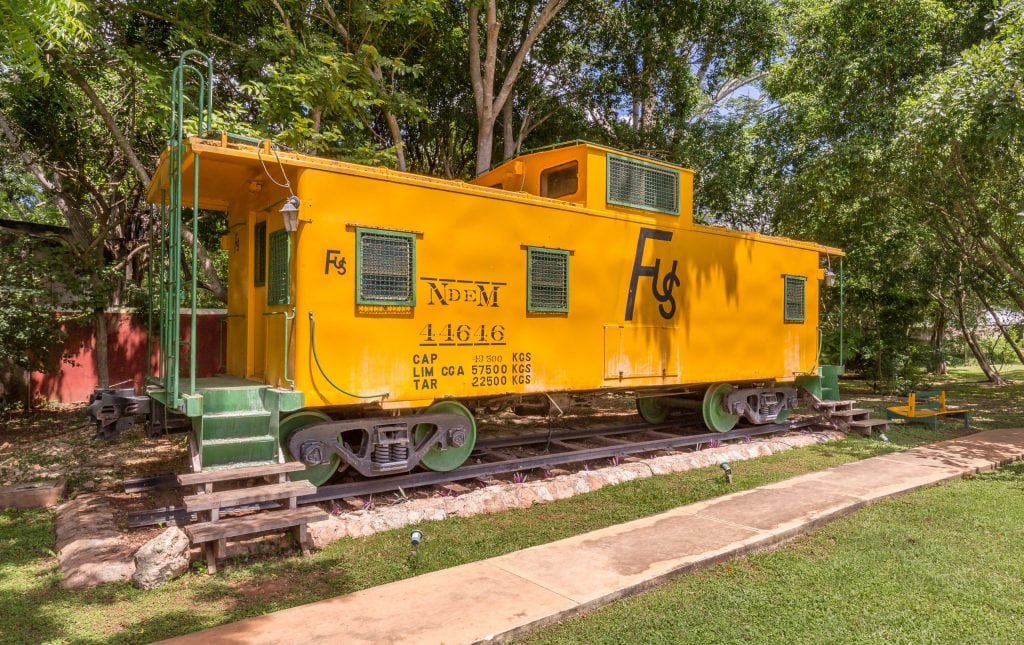
At Sotuta de Peon each processing step is explained and shown. Both the manual way and the automatic way. They have a huge collection of machines which they keep in very good state. I hope one day UNESCO might recognize the henequen plantations as a heritage site. They deserve it. After the tour I didn’t take lunch there as I had lunch with me and thus I had a bit of time left. The Kankirixche cenote nearby is worth a short stop on the way to the 3 cenotes Cuzama.
Best cenotes in Yucatan: 3 cenotes of Cuzama
Cuzama is a small town not from Merida in Yucatan and in the same area of Sotuta de Peon. The 3 Cuzama cenotes are reached by horse carts over rails which is one reason they are the best cenotes in Yucatan. Over a century ago these rails carried henequen but now it’s a great way to be transported to the cenotes. Just make sure you visit the original 3 cenotes of Cuzama as many other cenotes pretend to be the same. I paid for a complete horse cart for me and my son so that we could do the tour as fast or slow as we wanted. It’s a fun activity in Yucatan for sure!
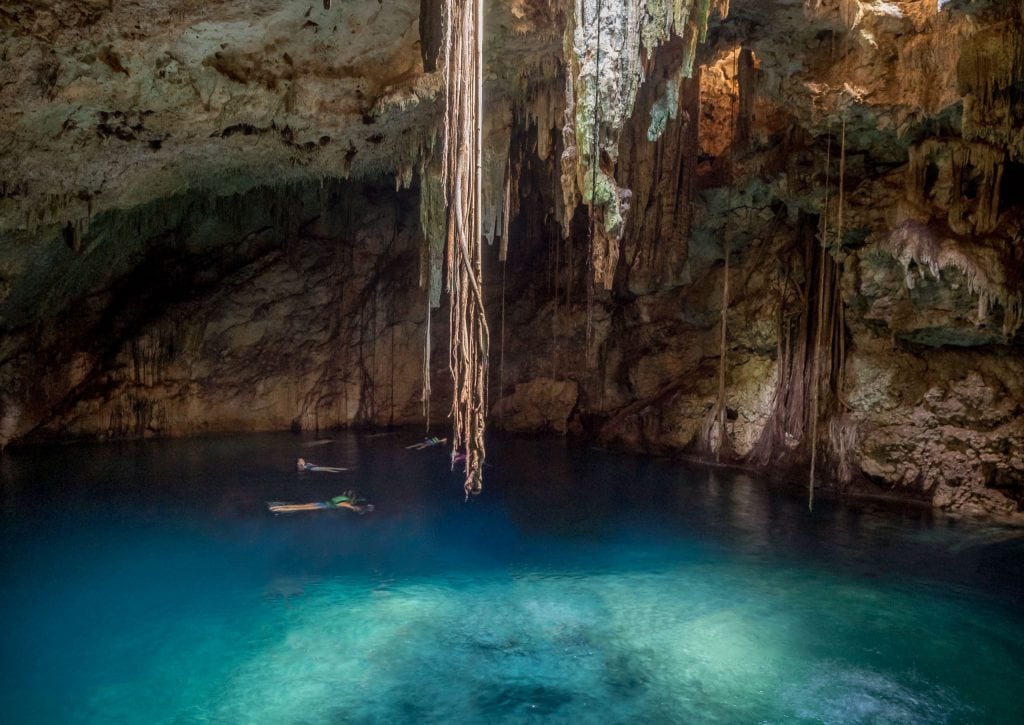
What are cenotes
Cenotes are natural formed pits or sinkholes. When water dissolves limestone bedrock a cavern is formed. If water levels decrease the remaining limestone loses its support and rocks fall. This ongoing geological process over time will expose the ground water to the open air. Some cenotes are completely open like the sacred cenote at Chichén Itza but others have just a small opening that fits just one person. There are cenotes connected to each other by underground rivers and cave systems but also those that are not connected at all. The 3 cenotes of Cuzama are all completely different and that’s one reason these are the best out of over 6000 cenotes in Yucatan.
MEXICO – Exploring Yucatan: An amazing 10 day Yucatan itinerary
3 cenotes of Cuzama tour
As the name says there are three cenotes on this tour. To visit all three, you’ll have to plan at least 2-3 hours so make sure you start the tour latest at 2PM. There is no number one cenote as the guide will take you first to the one with the least other visitors. At each cenote you’ll have about 30 minutes to swim. Make sure to bring snorkel gear as snorkeling is a great way to explore them. In no particular order the three cenotes are these.
Best cenotes in Yucatan: Cenote Chacsinicche
The Chacsinicche cenote is the middle one of the three cenotes and was my first stop. It’s also the best cenote in my opinion of the three to go swimming. The opening is about 25% of the cenote where stairs take you down the 15 meters to the water level. You’ll notice the blue water already from the top. The water in most of the cenotes is very clear as it’s constantly filtered through the limestone rocks. At this cenote you can also do some cliff jumping either from the platform or if you dare all the way from the top. I didn’t, but my son did. Make sure to spend the full 30 minutes here if this is your first one because it’s simply the best one.
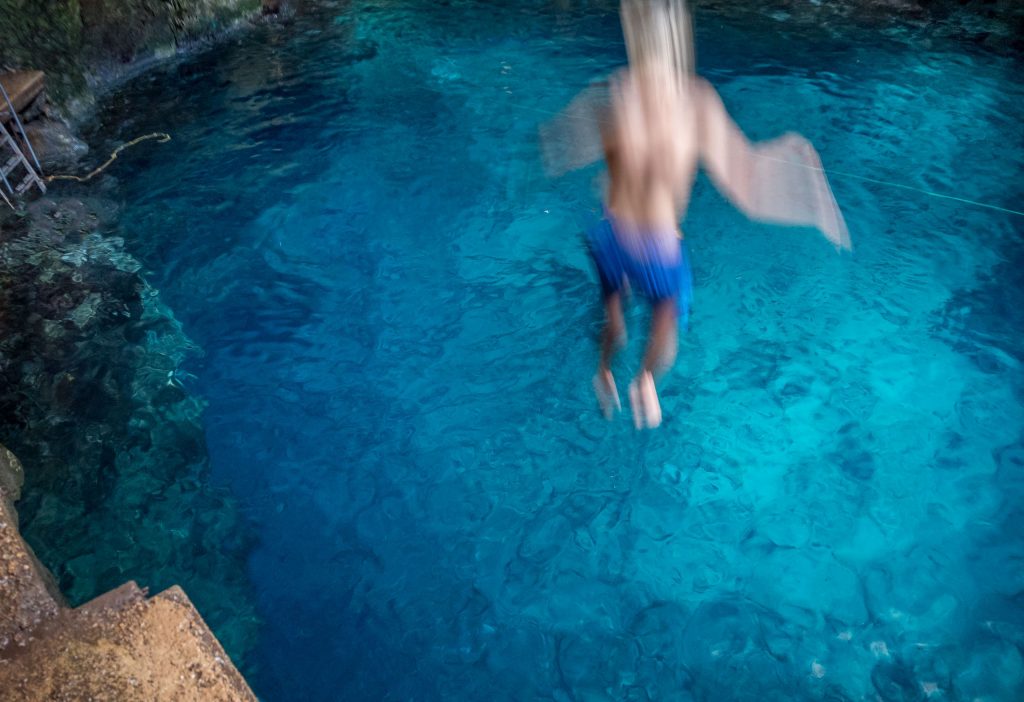
Best cenotes in Yucatan: Cenote Chelentun
Back in the horse cart is was a short drive to the cenote Chelentun which is the farthest away. It has just two small openings of which one serves as the entrance. The ladder is long and straight down so be careful. It’s a long way down if you slip. The water in this cenote is also very cool and lit up bright blue by the hole in the ceiling. Cenote Chelentun is mostly covered so you’ll see very nice rock formations too. A great place to swim and snorkel too and cool down from the Mexican heat.
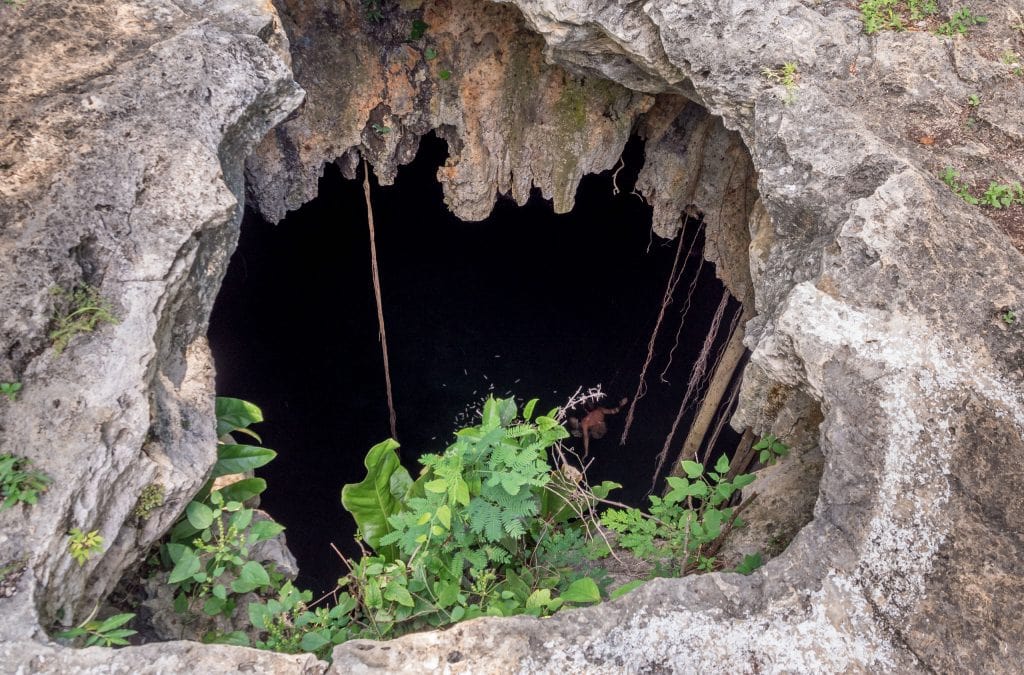
Best cenotes in Yucatan: Cenote Bolonchojol
Cenote Bolonchojol is closest to the entrance and the last I visited. When I arrived, I didn’t see the cenote at all until I saw someone appearing between the roots of a tree. There was a tiny hole there with a ladder down to a cave system. Cenote Bolonchojol is completely different as the other two as it’s more like a cave. The ceiling hasn’t collapsed. After a short walk through the cave I arrived at the underground lake. It was pitch dark. The water was much colder and after a short swim I climbed out at the other side of the cave. It was a short climb up through the same hole. It was the end of the 3 cenotes of Cuzama tour and 15-minute later I was back at the entrance.
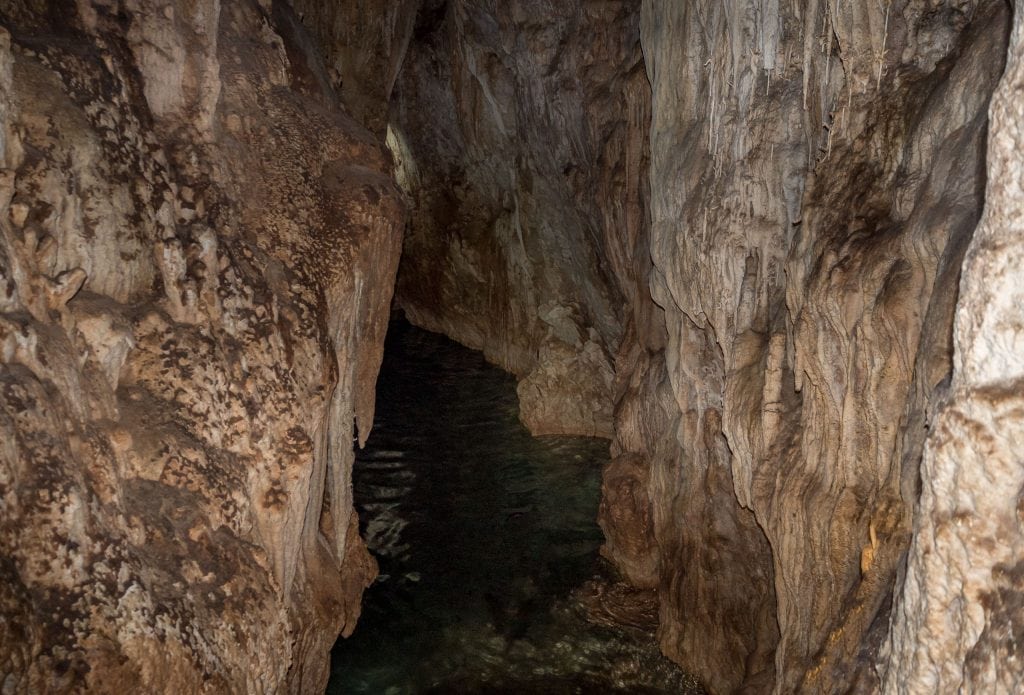
It was around 5PM when I was back in my car on the way to Merida which was my base for exploring this part of Yucatan. Sotuta de Peon and the 3 cenotes of Cuzama are one day trip I highly recommend. I learned a lot about the henequen/agave industry and those cenotes are simply amazing. The best cenote in Yucatan in my opinion is cenote Chacsinicche. Looking back at my Yucatan itinerary I probably would have stayed overnight at Sotuta de Peon and do the Uxmal trip from there. It’s more efficient in time but at the other hand would just save an hour driving. Make sure to read my Yucatan itinerary to see what you can do more in the area.
Stay tuned for more stories and subscribe to the newsletter or follow CTB on social media (Facebook, Twitter, Instagram including Instagram stories; on all social media you can find CTB @christravelblog) to get updated information.
Did you visit Sotuta de Peon & the 3 cenotes of Cuzama too or do you have questions? Please leave a comment at the bottom of the page. Love to hear from you!
Further reading
Sometimes it’s impossible to cover every single place of interest, activities, food, and others that might be relevant. In the below list you find a list of relevant links with further information about Sotuta de Peon & the 3 cenotes of Cuzama which I have carefully curated. These will help plan your trip even better.
- The area around Merida is also well known for its distilleries. With the Xtabentun cocktail the most famous cocktail in the area it’s a great idea to learn more about it. Check the following article where you should go: Complete Guide to Xtabentún Cocktails, Tours and Recipes in Merida
Gallery Sotuta de Peon & the 3 cenotes of Cuzama
Click an image for a full screen gallery of more photos taken during this trip. If you like to use any photo for commercial, private or editorial use please contact first for permission and/or pricing.


